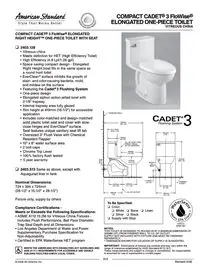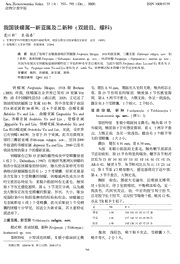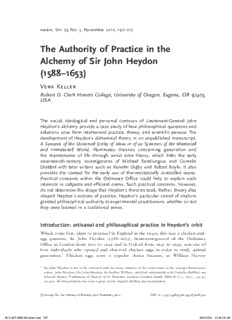
The Authority of Practice in the Alchem y of Sir John Heydon PDF
Preview The Authority of Practice in the Alchem y of Sir John Heydon
ambix, Vol. 59 No. 3, November 2012, 197–217 The Authority of Practice in the Alchem y of Sir John Heydon (1588–1653) Vera Keller Robert D. Clark Honors College, University of Oregon, Eugene, OR 97403, USA The social, ideological and personal contours of Lieutenant-General John Heydon’s alchemy provide a case study of how philosophical questions and solutions arise from intertwined practice, theory, and scientific persona. The development of Heydon’s alchemical theory in an unpublished manuscript, A Synopsis of the Universall Entity of Ideas or of ye Systemes of the Maeteriall and Immateriall World, illuminates theories concerning generation and the maintenance of life through aerial nitre theory, which links the early seventeenth-century investigations of Michael Sendivogius and Cornelis Drebbel with later writers such as Kenelm Digby and Robert Boyle. It also provides the context for the early use of thermostatically controlled ovens. Practical concerns within the Ordnance Office could help to explain such interests in saltpetre and efficient ovens. Such practical concerns, however, do not determine the shape that Heydon’s theories took. Rather, theory also shaped Heydon’s notions of practice. Heydon’s particular strand of vitalism granted philosophical authority to experimental practitioners, whether or not they were learned in a traditional sense. Introduction: artisanal and philosophical practice in Heydon’s orbit Which come first, ideas or practice? In England in the 1640s, this was a chicken-and- egg question. Sir John Heydon (1588–1653), lieutenant-general of the Ordnance Office in London from 1627 to 1642 and in Oxford from 1642 to 1646, was one of four individuals who opened and observed chicken eggs in order to study animal generation.1 Chicken eggs were a popular choice because, as William Harvey 1 Sir John Heydon is not to be confused with his many relatives of the same name or the younger Rosicrucian writer, John Heydon. On John Heydon, his brother William, and their relationship with Cornelis Drebbel, see Edward Murray Tomlinson, A History of the Minories, London (London: Smith, Elder & Co., 1907), 134–43, on 400. All transcriptions have been given in the original spelling and punctuation. © Society for the History of Alchemy and Chemistry 2012 DOI 10.1179/174582312X13457672281740 5599--33--119977--AAMMBB 0099 KKeelllleerr..iinndddd 119977 99//2277//22001122 1111::5522::2266 AAMM 198 VERA KELLER explained, they were so cheap, common, and easy to observe.2 They illustrated how the book of nature could be easily laid open to ocular inspection. However, the fact that John Heydon, Kenelm Digby, Nathaniel Highmore and Harvey all drew different philosophical conclusions from their observations of chick generation demonstrated that there was more to experimental practice than easily met the eye.3 The ways in which natural philosophical knowledge was drawn from experimental practice depended upon differing views of philosophy and of practice. Studies of alchemical, artisanal and academic laboratory practice should lead us, as Ursula Klein has urged, to “replace the simple distinction between scholarly and artisanal knowledge” made in the past with a “broad spectrum of forms of knowl- edge, with differences only in degree.”4 Of the four observers of chicken eggs (Harvey, Highmore, Digby, and Heydon), Heydon, at first blush, appears to be at the practical edge of this spectrum. Given his hard-pressed career as a military supplier in a losing battle, it would be easy to explain his philosophical concerns through allusion to a practical context. His investigations into the chemical properties of nitre might aid saltpetre production (and in turn gunpowder production), while philosophical theo- ries of respiration, combustion, temperature and smoke could be linked to the design of portable campaign ovens suitable for the battlefield or colonial ventures. Samuel Hartlib, for instance, noted how useful Heydon’s “experimentum” for “turning salt water into fresh” would be for supplying ships, and he also remarked upon Heydon’s calculation that the portable, self-regulating ovens invented by his chief engineer, Cornelis Drebbel, would save the king’s army £40,000.5 Although undoubtedly relevant, such practical concerns do not constitute a full explanation for the philosophies of such figures as Heydon, or of his engineer, Drebbel.6 Others facing similar pressures made different philosophical choices. 2 William Harvey, Anatomical Exercitations concerning the generation of living creatures (London: Pulleyn, 1653), 2. 3 Karin Ekholm, “Harvey’s and Highmore’s Accounts of Chick Generation,” Early Science and Medicine 13 (2008): 568–614. Highmore was responding to the theories of Kenelm Digby, who also served as a conduit of observations between Harvey and Highmore. Highmore refers to “That observation of Doct. Harvies, related to us by Sir Kenelm Digby” in Nathaniel Highmore, The History of Generation (London: John Martin, 1651), 100. Digby and Heydon used Drebbel’s newly invented self-regulating furnace as an artificial incubator for their experimental chicks, as Digby recalled in 1644. See Kenelm Digby, Two treatises in the one of which the nature of bodies, in the other, the nature of mans soule is looked into in way of discovery of the immortality of rea- sonable soules (Paris: Gilles Blaizot, 1644), 220: “Sir Ihon Heydon, the Lieutenant of his Maiesties ordinance (that generous and knowing Gentleman; and consummate souldier both in theory and practise) was the first that instructed me how to do this, by meanes of a furnace so made as to imitate the warmeth of a sitting henne.” Decades later, during a discussion of artificial incubation in the Royal Society, Sir Jonas Moore, Surveyor General of the Ordnance Office, would remind the Fellows how “Sir Christopher [sic] Heydon together with Drebell long since in the Minories hatched several hundred eggs; but mentioned not the way.” See Thomas Birch, A History of the Royal Society (London: Millar, 1757), 455. 4 Ursula Klein, “The Laboratory Challenge: Some Revisions of the Standard View of Early Modern Experimen- tation,” Isis (Focus) 99 (2008): 769–82, on 781. 2 5 Samuel Hartlib, The Hartlib Papers CD, 2nd ed. (Sheffield, 2002), 29/2/32B, 29/5/73A. 6 Bruce White and Walter Woodward have argued that colonial pressures to save fuel encouraged the adoption of a version of Drebbel’s oven in the circle of John Winthrop Jr. in “‘A Most Exquisite Fellow’ — William White and an Atlantic World Perspective on the Seventeenth-Century Chymical Furnace,” Ambix 54, no. 3 (2007): 285–98. However, in addition to sharing similar pressures, Heydon and Winthrop shared similar philo- sophical concerns. In 1640–1641, Winthrop Jr. and his associates at this time were also very interested in the alchemical theories for which the oven was designed. Robert Child’s alchemical library catalogue of 1641, for 5599--33--119977--AAMMBB 0099 KKeelllleerr..iinndddd 119988 99//2277//22001122 1111::5522::2277 AAMM THE AUTHORITY OF PRACTICE IN THE ALCHEMY OF SIR JOHN HEYDON 199 Furthermore, these pressures make the attention that Heydon paid even at the height of his career to more speculative investigations all the more remarkable. Heydon and his brother-in-law, Sir Christopher Gardiner, explored the works of Nuisement, Isaac Hollandus, Sendivogius, and other alchemical authorities, even as political tensions flared in 1638 (see the postscript of Appendix A). Heydon was also the author of a speculative text that he described in correspondence to Thomas Browne and Elias Ashmole. On the basis of these descriptions, I will argue that an anonymous text in MS Ashmole 1446, A Synopsis of the Universall Entity of Ideas or of ye Systemes of the Maeteriall and Immateriall World, can be attributed to him. Heydon’s alchemy, I will argue, allowed, in particular, for the intersection of philosophical and practical identities.7 Heydon’s conception of who might be considered a philosopher was far broader than that of some of his contemporaries. For instance, Harvey championed the importance of experimental practice, or habitus. Practice honed ideas in the mind about nature, just as practice honed the phantasy of artists and poets, who might all observe the same thing and yet express it quite differently, depending upon their mental conceptions.8 However, although the habits of art and science were analo- gous, they could also be sharply distinguished, according to Harvey. His distinctions between art and science also etched divides between artisans and philosophers.9 Heydon, by contrast, sought to broaden the category of philosopher. As Heydon wrote to Browne in 1652 while offering to enter into an alchemical correspondence with him, “I have ben abundantly satisfied by ye testimony of very knowinge men, as well literat as illiterate.” For, as he continued, “Non qui graeca scit, aut verba calet Latina doctus est, aut sapiens; sed qui vera videt; & falsis secernere novit” (It is not he who knows Greek, nor who proclaims Latin words, who is learned or wise, but he who finds out truths and can distinguish them from falsehoods).10 Heydon presented himself as an informed skeptic concerning traditional learning (although, tellingly, his disdain of ancient languages was expressed in Latin). He particularly approved of Browne for not subscribing to the “traditions” of either philosophy or medicine, “beyond what effects of Nature, his owne Experimentale practice, or de- monstrable Reason shall manifest to be really true.”11 6 Continued 3 instance, included Drebbel’s philosophical text, On the Elements. See William Jerome Wilson, “Robert Child’s Chemical Book List of 1641,” Journal of Chemical Education 20, no. 3, 123–29. See also William Newman and Lawrence Principe, Alchemy Tried in the Fire: Starkey, Boyle, and the Fate of Helmontian Chymistry (Chicago, Ill.: University of Chicago Press, 2002), 158–61. 7 Compare Benjamin Worsley, whose intertwined practical interests in saltpetre and theoretical interests in Sendivogius and Nuisement are explored in: Charles Webster, The Great Instauration: Science, Medicine and Reform, 1626–1660 (New York: Holmes & Meier Publishers, 1976); John T. Young, Faith, Medical Alchemy, and Natural Philosophy: Johann Moriaen, Reformed Intelligencer and the Hartlib Circle (Brookfield, Vt.: Ashgate, 1998); and Newman and Principe, Alchemy Tried in the Fire, 239–49. 8 William Harvey, Excercitationes de generatione animalium (London: Pulleyn, 1651), B2v–B3. On philosophical 4 habitus, see Jean-François Gauvin, “Instruments of Knowledge,” in The Oxford Handbook of Philosophy in Early Modern Europe, ed. D. M. Clarke and C. Wilson (Oxford: Oxford University Press, 2011). 9 Harvey, Exercitationes, B3, “nam ut ars circa facienda, ità scientia circa cognoscenda, est habitus: ut illa ab imitatione exemplarium; ità haec, à rerum naturalium cognitione procedit.” For Harvey’s relationship with alchemists, see Walter Pagel, New Light on William Harvey (Basel: Karger, 1976), 42–61. 10 John Heydon to Thomas Browne, 23 September 1652, Bodleian Library, Rawlinson MS D 391, 26. 11 John Heydon to Thomas Browne, 23 September 1652, Bodleian Library, Rawlinson MS D 391, 26. 5599--33--119977--AAMMBB 0099 KKeelllleerr..iinndddd 119999 99//2277//22001122 1111::5522::2277 AAMM 200 VERA KELLER The focus on practice in the history of science in the last few decades has some- times had the unintended consequence of reaffirming divides between practitioners and philosophers. We now have many studies of the practices, inventions and instru- ments of the learned.12 Often, these take the form of showing how the learned drew ideas from the world of practical concerns and brought them to natural philosophy.13 Such studies of relations between worlds of learning and of practice can unintention- ally solidify divisions between the two. Meanwhile, we often do not pay the same attention to the explicit philosophies and ambitions of “practitioners,” or seek to determine how these individuals came to be categorised as practitioners rather than philosophers in the first place.14 Celebrating practitioners for their implicit knowledge can unintentionally confirm their identity on a lower epistemic rung, even as their explicit views may go unstudied.15 Rather than showing, for instance, how practical concerns such as incubation, oven design and saltpetre research travelled from the world of Heydon and Drebbel to that of Digby, Highmore, and Harvey, this essay will seek to illuminate the Ordnance Office as a very practical world that was intertwined with philosophical concerns of the greatest epistemic ambition. Heydon first encountered his future colleague, the inventor and philosopher Cornelis Drebbel, in the Ordnance Office, in a world that refused to distinguish between philosophers and practitioners. In 1653, Heydon would recall that he “first began to practice Spagyrically in London” in 1615, when he was twenty-seven years of age.16 At that time, he and his brother William, friends of Constantijn Huygens Sr., belonged to an Anglo-Dutch courtly circle whose optical, mechanical and mathematical pursuits are well known, but whose alchemical interests have not been 12 For a review of numerous studies of practice in the history of science, see James Secord, “Knowledge in Transit,” Isis 95 (2004): 654–72. 13 For example: Marjorie O’Rourke Boyle, “Harvey in the Sluice: From Hydraulic Engineering to Human Physiology,” History and Technology 24 (2008): 1–22. 14 The identity of the “mathematical practitioner” has been considered to be a highly important link between theory and practice, and Drebbel has been classified as one. See Eva Germaine Rimington Taylor, The Math- ematical Practitioners of Tudor and Stuart England (Cambridge, UK: The Institute of Navigation Stet, 1954), 191. See also: Stephen Johnston, “Mathematical Practitioners and Instruments in Elizabethan England,” Annals of Science 48 (1991): 319–44; and Katherine Hill, “‘Juglers or Schollers?’: Negotiating the Role of a Mathemat- ical Practitioner,” British Journal for the History of Science 31 (1998): 253–74. Frances Willmoth has suggested investigating relationships in the Ordnance Office between practitioners and philosophers in “Mathematical Sciences and Military Technology: The Ordnance Office in the Reign of Charles II,” in Renaissance and Revolution, ed. J. V. Field (Cambridge: Cambridge University Press, 1993), 117–32. Like Simon Forman, however, Drebbel claimed a higher status than mathematical practitioner through his alchemical access to the hidden causes of nature. See Lauren Kassell, Medicine and Magic in Elizabethan London: Simon Forman, Astrologer, Alchemist, and Physician (Oxford: Oxford University Press, 2005), 53. 15 In Matteo Valleriani, Galileo Engineer (Dordrecht: Springer, 2010), Drebbel is criticised as a “machine maker” (162). Valleriani does not refer to Drebbel’s published natural philosophy. By constrast, while identifying Drebbel as an “artisan,” Pamela Smith categorises his works among “texts by natural philosophers” rather than among “texts by artisans.” See Pamela Smith, The Body of the Artisan: Art and Experience in the Scientific Revolution (Chicago, Ill.: University of Chicago Press, 2004), 162–63, 366. Pamela Long has emphasised the importance of authorship to a claim of epistemic status in Openness, Secrecy, Authorship: Technical Arts and the Culture of Knowledge from Antiquity to the Renaissance (Baltimore, Md.: Johns Hopkins University Press, 2001). 16 MS Ashmole 1446, 166v. 5599--33--119977--AAMMBB 0099 KKeelllleerr..iinndddd 220000 99//2277//22001122 1111::5522::2277 AAMM THE AUTHORITY OF PRACTICE IN THE ALCHEMY OF SIR JOHN HEYDON 201 emphasised.17 In the 1610s and early 1620s in London, Huygens experimented with Drebbel’s inventions alongside the diplomat Sir Robert Killigrew, his wife, Lady Mary Killigrew, and other political figures. The Huygens papers in The Hague contain medical and cosmetic receipts from Robert and Mary Killigrew, their literary son Thomas, and Drebbel.18 Despite Heydon’s very practical concerns in the Ordnance Office, his chambers there were comfortably furnished for a virtuoso and his guests, with six “pictures,” “12 stooles of red cloath and turky worke,” “3 small turkye carpetts,” “4 paire of old hangings of tapestry,” “2 globes,” “2 old boxes with Instruments,” and a “violl and other things.” They also contained the goods of Stevens, his servant, and a library of over sixty volumes of Reformed piety, contemporary literature, philology, diction- aries and grammars, the classics, global travel narratives, and cartography, law, architecture and medical works, and surprisingly few (three) practical military and mechanical works.19 He was himself the dedicatee of several works.20 After Drebbel’s death in 1633, his secrets remained with Heydon. Drebbel’s children sold the secret of his self-regulating ovens to Hildebrand Pruson (a long-time associate of Heydon and Drebbel) and Howard Strachey, Heydon’s clerk.21 Hartlib noted that “Gardiner at Croydon,” Heydon’s brother-in-law, “got all Drebbel MS and Arcana,” and that “Gardiner cures feliciter.”22 Heydon’s alchemical correspond- ence with his brother-in-law reveals that Gardiner oversaw Heydon’s alchemical processes and acted as his alchemical reader at Haling manor in Croydon.23 There, Gardiner tended a reverbatory, a digesting oven, and a “vaporing oven.” Gardiner also regularly read works for Heydon, including Nuisement and Sendivogius (Appendix A), and gave his frank opinion on them.24 The two frequently discussed 17 Lisa Jardine, Going Dutch: How England Plundered Holland’s Glory (New York: Harper, 2008). In his autobiography, Huygens referred to both John and William Heydon (“Heidonios hic nempe duos, par nobile fratrum”). See Rosalie Colie, Some Thankfulnesse to Constantine: A Study of English Influence Upon the Early Works of Constantijn Huygens (The Hague: Nijhoff, 1956), 103. 18 Huygens Papers, Koninklijke Bibliotheek, The Hague, vol. 47, 503, 532, 576, 580. On Killigrew’s alchemical interests and medical cures, see Hugh Trevor-Roper, Europe’s Physician: The Various Life of Sir Theodore de Mayerne (New Haven, Conn.: Yale University Press, 2006), 182–83, 186, 356. 19 “An inventory of part of the goods and chattels of Sir John Hayden Knight taken the 28th of July 1643,” British Library Additional MS 28191, roll d. 20 These included: Henry Hexham, An appendix of the lavves, articles, & ordinances, established for marshall discipline, in the service of the Lords the States Generall of the United Provinces (The Hague: Isaac Burchoorn, 1643); Robert Ram [Thomas Swadlin], The Soldiers Catechisme (London: J. Wright, 1645); and Robert Sheringham, Joma. Codex Talmudicus (London: Junius, 1648). The Soldiers Catechism is a royalist tract masquerading as the parliamentarian tract of the same title by Robert Ram. 21 A.D. 1634, no. 75, “Stoves or Furnaces for Drying and Heating,” in Appendix to Reference Index of Patents of Invention, ed. Bennett Woodcroft (London: Patent office, 1855), 16. 22 Hartlib, The Hartlib Papers CD, 29/5/102B. 23 For Gardiner’s biography and an overview of his alchemical correspondence, see Louis D. Saco, “Sir Christopher Gardyner,” Transactions of the Colonial Society of Massachusetts 38 (1959): 3–15. 24 UK National Archives, 5 November 1637, State Papers 16/373, 67. Like Heydon, Gardiner was a learned reader who transferred his humanist skills to practical matters. Thomas May stressed this quality of Gardiner’s when he dedicated his Virgil’s Georgicks Englished (London: Walkley, 1628). Thomas Morton described Sir Christo- pher Gardiner as “a Knight, that had bin a traveller, both by Sea and Land; a good judicious gentleman in the Mathematticke, and other Sciences usefull for Plantations, Kimistry, &c. and also being a practicall Enginer.” See Thomas Morton, New English Canaan (Amsterdam: Jacob Frederick Stam, 1637), 182. 5599--33--119977--AAMMBB 0099 KKeelllleerr..iinndddd 220011 99//2277//22001122 1111::5522::2277 AAMM 202 VERA KELLER and disagreed over degrees of heat.25 On one of Gardiner’s letters, Heydon sketched in new designs for the digesting oven.26 Good ovens were important to any alchemist, but distinguishing degrees of heat was a particular interest of Heydon’s. As he would write in 1653, “since the yeare 1615, in which I first began to practice Spagyrically in London, I have not met with more then 2 that understand the right Fabrick of the severall Furnaces necessary ... together with the Respective and much differing degrees of Heate in all which I have long since so fully satisfied my selfe that I have many yeares remained without any scruple in any of them.”27 Heydon as the author of the Synopsis MS Ashmole 1446 includes an English translation of Nuisement’s 1621 Traittez du Sel, followed by the Synopsis, and, among other material, an “Abstract of letters sent to Mr Stevens from Sir John Heydon, upon the sending to him my Theatrum Chemi- cum Brit & Fasciculus Chemicus.”28 Ashmole had been the friend of Heydon at least since Heydon moved with the Royalist Ordnance Office to Oxford from 1642 to 1646.29 Ashmole would later sadly note the death of Heydon, “my worthy friend,” in his diary on 13 October 1653.30 The attribution of the Synopsis to Heydon is sug- gested by this setting and by a comparison with the alchemical ideas that Heydon expressed in his surviving correspondence with Stevens and Browne. The author of the Synopsis held a broad view of philosophical authority, discussing, for instance, Drebbel’s philosophical ideas. Such attributions of philosophical authority to Drebbel had become common in Ramist Central Europe, but were rare in England.31 The Synopsis presents a highly explosive view of the generation of the world and its contents. It connects the formal to the material world through the ability of “salts” such as saltpetre to attract and congelate spirits (equated with light, as an entity both material and immaterial) under the right environmental conditions, including heat, cold, density, and rarity.32 The ability of salt to dissolve, and thus appear to lose its form, and yet then to coagulate repeatedly into a specific crystal structure maintain- ing formal integrity, suggested a model for how a hidden form might structure mineral and biological matter.33 25 State Papers 16/374, 17 December 1637, 39; State Papers 16/397, 80, 3 August 1638. 26 State Papers 16/374, 28 December 1637, 109. 27 MS Ashmole 1446, 166v. 28 MS Ashmole 1446, 153–162v. 29 For John Heydon in Oxford from 1642 to 1646, see Ian Roy, The Royalist Ordnance Papers, 1642–1646 (Oxford: Oxfordshire Record Society, 1964–1975). 30 Elias Ashmole and William Lilly, The lives of those Eminent Antiquaries Elias Ashmole, Esquire and Mr William Lilly (London: T. Davies, 1774), 298, 320. 31 Vera Keller, “How to Become a Seventeenth-Century Natural Philosopher: The Case of Cornelis Drebbel (1572–1633),” in Silent Messengers: The Circulation of Material Objects of Knowledge in the Early Modern Low Countries, ed. Sven Dupré and Christoph Lüthy (Berlin: LIT Verlag, 2011), 125–52. 32 Compare the role of light in the embryology of Jan Marek Marci z Kronlandu, Idearum operatricium idea; sive, Hypotyposis et detectio illius occultae virtutis, quae semina faecundat, & ex iisdem corpora organica producit (Prague: Typis Seminarii Archiepiscopalis, 1635), which includes an extended discussion of egg forma- tion (D2). William Harvey received a copy of this book from Marci in Prague; the latter complains that Harvey did not discuss it in his De generatione animalium. See Walter Pagel, William Harvey’s Biological Ideas. Selected Aspects and Historical Background (New York: Hafner, 1967), 288. 33 Norma E. Emerton, The Scientific Reinterpretation of Form (Ithaca: Cornell University Press, 1984), 19–47. 5599--33--119977--AAMMBB 0099 KKeelllleerr..iinndddd 220022 99//2277//22001122 1111::5522::2277 AAMM THE AUTHORITY OF PRACTICE IN THE ALCHEMY OF SIR JOHN HEYDON 203 In the generation of the world, material and immaterial light penetrate the mass of the world, igniting the incombustible oil at the centre of all material. A tremendous explosion ensues. This “big bang” disburses matter through the universe. According to the author, the tria prima of Paracelsus were the products of one of the elements working upon the other, all of which were included within earth: “Fire acting upon Air, produces Sulphur, Aire upon Water Mercury, Water upon Earth produced Salt. But the Earth (in regard it had nothing else to worke upon) did not produce any thing, but became the Receptacle, Matrix & Nurse of the rest.”34 Or, “the 4 Elements be the 3 Principles Congregated & Concreted into one substance of Earth.”35 The differences between the elements, however, were not those of specific qualities, but greater or lesser degrees of subtlety. The author of the Synopsis wrote that “according to Drebell, That Fire, is subtill Air/ Aire, is subtill Water/ Water, subtill Earth/ Earth, subtill Fire./ For the elements are naturally convertible into themselves, & so do mutually live in each other.”36 The author, however, did not swallow his theories whole from the works that he read, but criticised them. “Drebel is deficient in ye efficient cause of Fire, or in the Primitive beginning thereof & makes the finall Constitucion thereoff, to be too grosse,” he complained.37 These views can be compared with the philosophical theories that Heydon expressed to Browne and Ashmole via Stevens. To Browne, Heydon described his philosophy as a fusion of “Hyppocrates & Hermes,” one giving an account “of ye Forme of this Materiall; of ye intellectual constitution of ye universe; & of ye omnis- cous & (therefore omnipotent) Essence of all Entities & Essences” and the other “a full & satisfactory notice of ye Materiall & compounded world; by ye compositione & constitutione of Light (which is ye General Spirit thereof) wherein ye General Form & material substance, of necessity must be comprised.”38 This balance of and rela- tionship between “formal” and “material” worlds matches the Synopsis’s description of “Materiall and Immateriall” worlds. Heydon continued to describe to Browne the role of salt, and saltpetre in particu- lar, in condensing the spirit of the world. Light, as an entity both “partly materiall, partly immateriale,” served as the link between material and formal worlds. As the “true Elementary and Elementating bodily substance,” light, through the intervention of three luminaries, is more & more condensed untill within ye bosom of ye Ocean, & bowells of ye earth, it be coagulated into ye terminating substance of mercuriall or liquid salt: which (by ye concurring centralle heate of ye earth of ye sol: is after concreted into ye volatil, midl & fixed speces of saltpeeter, sal armoniae, & fix salt (whereof every minerall, vegetable & animale, hath specificale & peculiar proportion:) so that the conclusion of that Spagyricke will be found orthodox; in sole & sale sunt omnia [Everything is in sun & salt].39 34 MS Ashmole 1446, 155r–v. 35 MS Ashmole 1446, 156r. Compare Clovis Hesteau de Nuisement, Traittez de l’harmonie et constitution generalle du vray sel, secret des Philosophes, & de l’Esprit universelle du Monde, suivant le troisieme Principe du Cosmopolite (Paris: Perier and Buisard, 1621), 173: “Et sans doute les elemens ont une telle connexion & afinité entr’eux que l’un participe de l’autre: & chacun d’eux se trouue en son compagnon.” 36 MS Ashmole 1446, 159r–v. 37 MS Ashmole 1446, 160. 38 MS Rawlinson D 391, 26v. 39 MS Rawlinson D 391, 27r. 5599--33--119977--AAMMBB 0099 KKeelllleerr..iinndddd 220033 99//2277//22001122 1111::5522::2277 AAMM 204 VERA KELLER The discussion of light by the author of the Synopsis is also very close to that found in Heydon’s letter to Browne. The author of the Synopsis wrote that “the Opticks have determined Light to be the proper subject of Coulor, & Colour to be the prop- er Accident of Light. All Tincture therefore proceeds from Light. that Sulphur doth illuminate, & give Tincture to every Body, & that it is the painter of all Colours, the Spagericks doe teach.”40 In Heydon’s letter, the “Opticks” are also cited: of which sulphur Geber makes this protestation: Per Deum vivum, id ipsum illuminat omne corpus: quoniam est lumen a lumine & Tinctura [Through the living God, it itself illuminates every body, since it is light from light and a Tincture]: & by generall consent, it is agreed that calor est omnium Tincturam luminumque pater [heat is the origin of Tincture and all light] ... since according to that rule of ye opticks; Lux est subiectum proprium coloris; color accidens proprium lucis [Light is the subject proper to colour; colour is the accident proper to light]: (as by ye Ranebowe &c).”41 The author of the Synopsis constantly sought substances that might link the two realms he discussed, and that could be connected to actions of light, colouring, flame, life and death, particularly as observed in the action of ovens. The author of the Synopsis wrote that, “Vapour was the first & next action of Fire; And Fire, continu- ally ejecteth a spirituall Vapour, as the French Author p[ro]p[er]ly affirmeth,” and “all Flame, as its beginning was from smoake, more unctious then vaporous; Soe it hath its ending from smoke, more vaporous then Oyly. And the Vapour therof by cooling & by condensing at length is coagulated & incorporeated into a saltnes; as we may see in the Soote of all Chymnies.”42 Writing to Browne, Heydon likewise described this salty vapour, ejected by fire and visible in ashes, in what was again a partially verbatim Latin version of the Synopsis: “nam vapor est prima proximaque ignis actio: ignisque vaporem continuo ejicit spirituosum, luminosum, & salsugino- sum [for vapour is the first and next action of fire: and fire continually ejects a spiritous, luminous, and salsuginous vapor]: both which the smoake, smout, & ashes of every combustible substance do sufficiently manifest.”43 Nuisement had argued that impure or noxious matter, such as the soot produced in chimneys or sulphuric vapours given off by fire, might pollute or burn away the vital spirit, and thus cause disease and snuff out life (and not the semina of disease discussed by Severinus, Fracastoro, Fernel, and Sennert).44 Eight months after writing to Browne, Heydon wrote to Stevens on 1 June 1653, after a “brief & Cursory inspeccon made into Captaine Ashmoles Booke,” which had been sent to him. He boasted that I know Radicalls really & fundamentally from the first Originalls, & by practicall Reduc- con can prove & demonstrate the 3 or rather 4 principles thereof, & of all the 3 species of Minerall, vegetable & Animall Natures, &c. & the same to proceede frome one forme 40 MS Ashmole 1446, 157r. 41 MS Rawlinson D 391, 27v. 42 MS Ashmole 1446, 158–158v. 43 MS Ashmole 1446, 141r. 44 Nuisement, Traittez, 183–84: “Que cette choses volatile soit un excrement il se prouue assez par les puantes fumees des corps bruslans desquels s’engendre la suye attachee aux cheminees & planchers enfumez; la quelle retient l’odeur des corps bruslez, & l’amertume des excrements des sels.” 5599--33--119977--AAMMBB 0099 KKeelllleerr..iinndddd 220044 99//2277//22001122 1111::5522::2277 AAMM THE AUTHORITY OF PRACTICE IN THE ALCHEMY OF SIR JOHN HEYDON 205 & matter omitted & againe diversified & dispried by one & the same generall Spirit, adequately composed & consisting of them both, & that those 3 species & their Indi- vidualls do differ secunda matrices tantis [according to such matrices], & are convertible the one into the other, as the 4 Elementating Elements are & the 3 principals resulten from them.45 This is the same view as that found in the Synopsis concerning the general nature of matter and spirit preceding specification, the role of the matrix in specification, the convertibility of the Elements, and the Elements as the origins of the tria prima. As the author concluded there, animal, vegetable and mineral beings “are natured” according “to the Nature & disposicon of the place, or Matrix into which the Generall Spirit is infused & incorporated ... nor are they otherwise produced into being.”46 “The difference only in degrees”: the Sendivogian school and Heydon’s theory of generation William Newman has described a division in seventeenth-century alchemy between the adherents of a “mercurial school,” according to which the matter employed in the production of the Philosophers’ Stone must be metalline, and a “Sendivogian school,” according to which the alchemist began with a “universal salt extracted from elemen- tal earth.”47 The Synopsis, like Drebbel’s On the Nature of the Elements and Nuise- ment’s Traittez du Sel, belongs to the latter school. Nuisement also cast his treatise as a continuation of Sendivogius’s work. According to Libavius, Sendivogius and Drebbel were so similar that, had Sendivogius written in the vernacular, the two books would have been the same. He particularly criticised their theory of generation.48 Sendivogius and Drebbel argued that starting with expensive metalline matter was unnecessary according to a matter theory in which all spirits are specified not accord- ing to semina, but according to degrees of purity, density, and rarity within the matrix. The greatest alchemical processes could thus be produced starting with the cheapest substances, including saltpetre produced from excrement. Likewise, Heydon promised an easy shortcut to the heart of nature. A theory of generation according to which all the seeds of all species (other than man, Heydon specified) were made of the same matter, and were only differentiated by the matrix into which they fell (according to purity and degree of subtlety), made the specification of matter into desired substances a seemingly simple matter. Ashmole, as Heydon wrote again the following week, would never find the right magistery, without consulting Heydon, as 45 MS Ashmole 1446, 165. 46 MS Ashmole 1446, 162–162v. 47 William R. Newman, Gehennical Fire: The Lives of George Starkey, an American Alchemist in the Scientific Revolution (Cambridge, Mass.: Harvard University Press, 1994), 212–13. 48 Vera Keller, “Drebbel’s Living Instruments, Hartmann’s Microcosm and Libavius’ Thelesmos: Epistemic Machines before Descartes,” History of Science (2010): 39–74, on 54–55; Andreas Libavius, “Apocalypseos hermeticae pars posterior,” in Syntagma arcanorum chymicorum ... tomus secundus (Frankfurt: Kopff, 1613), 443, 450. 5599--33--119977--AAMMBB 0099 KKeelllleerr..iinndddd 220055 99//2277//22001122 1111::5522::2277 AAMM 206 VERA KELLER one who has “taken the paines first to understand the tru constitucons” “of Natures first composicon & Principles.” The first principles of nature were but few yet Generall, most efficacious, infallible, easy & obvious, to those yt have inquired into them, the direct & simple way of Nature, who is non other then the medi- ate Minister of the Omnipotent Creator, & (according to ye divine immutable & infal- lible Order which he was pleased from the beginning to prescribe, continually produceth all things, as well supersolary as sublunary, whether Minerall, Vegetable or Animall, Celestiall or Luminous from the Horizon to the Center of the whole Materiall, harmoni- 1 call & Compounded world (the forme conjoyning medium & matter, or Generall soule, spirit & Bodily substance of all which & of every species & individuall (the Soule of Man excepted) are the same, & the generale sperme & seedes of them all being one & the same, & the difference only in degrees of subtiliacon & Condensacon, of purity & impurity, in respect of the different Matrices, into which they are inspired & infused.49 Drebbel, Sendivogius, Nuisement and Heydon (unlike Libavius and Sennert) did not argue that the specification of matter was due to specific semina implanted in nature by the creator.50 For them, generative and life-sustaining vital spirits could be attracted and coagulated by the vitrifying powers of salts. Before being specified by this process, all matter was identical, and the differentiation in species occurred only through the density and rarity of the coagulated matter caused by heat and cold, as well as the level of purity of its vital spirit. Subtle variations in heat along a continuum of rarefied or condensed matter, therefore, played an important role in Heydon’s matter theory. This was why, as Heydon wrote to Stevens, it was so important to have the “right Fabrick of the severall Furnaces necessary,” “together with the Respective and much differing degrees of Heate.” Drebbel’s self-regulating oven included the first thermostat differentiating degrees of heat according to the greater or lesser subtlety of mercury (which, as it rose, operated a lever opening and closing the air supply). Such ovens were not simply a means to save the king’s army money or to produce chicken eggs efficiently. Their structure fitted a particular alchemical theory in which combustion was linked to a substance in the air circu- lated through the vaporisation and condensation of matter through degrees of heat and cold. Digby mechanises Heydon’s experimental chickens Ironically, removing the source of specification from the privileged and protected position of the semina and diffusing it more widely through the world means that this very generally vital universe could be easily overturned to be a more mechanist universe. Once specific semina are removed, writers influenced by Descartes, such as Digby, might easily reinterpret the universal vital spirit as vegetative, thus granting 49 “Abstract of letters sent to Mr Stevens from Sir John Heydon, upon the sending to him my Theatrum Chemicum Brit[annicum] & Fasciculus Chemicus,” MS Ashmole 1446, 165v–166r. 50 William R. Newman, Atoms and Alchemy: Chymistry and the Experimental Origins of the Scientific Revolution (Chicago, Ill.: University of Chicago Press, 2006), 147. 5599--33--119977--AAMMBB 0099 KKeelllleerr..iinndddd 220066 99//2277//22001122 1111::5522::2277 AAMM
Description:The list of books you might like

Mind Management, Not Time Management

What Happened to You?

As Good as Dead

Shatter Me Complete Collection (Shatter Me; Destroy Me; Unravel Me; Fracture Me; Ignite Me)
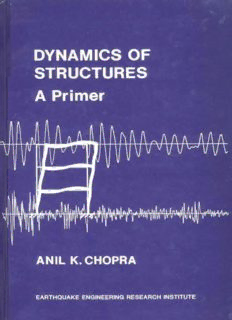
Dynamics of Structures A Primer

By Any Other Name

Marriage and Cohabitation
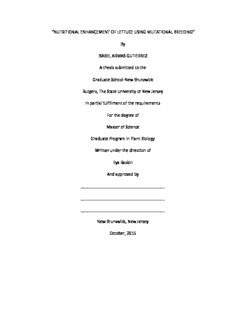
By ISABEL ARMAS GUTIERREZ A thesis submitted to the Graduate
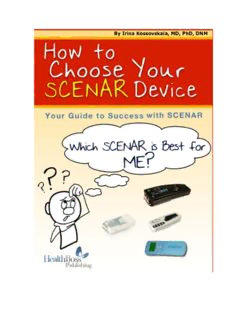
By Irina Kossovskaia, MD, PhD, DNM
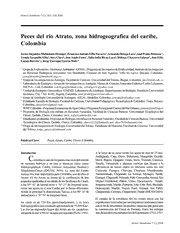
Peces del río Atrato, zona hidrogeografica del caribe, Colombia

Model Theory, Algebra, and Geometry
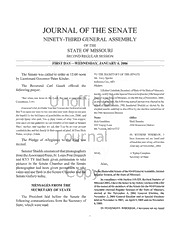
Missouri Senate Journals Compilation 2006

Hypoxische Gefährdung des Fetus sub partu: Klinik und neue Überwachungsverfahren
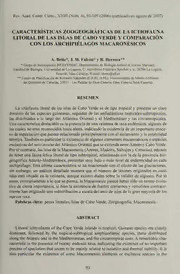
Características zoogeográficas de la ictiofauna litoral de las islas de Cabo Verde y comparación con los archipiélagos macaronésicos
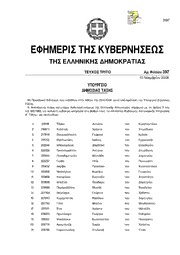
Greek Government Gazette: Part 3, 2006 no. 397

Annals of the New York Academy of Sciences 1993: Vol 683 Index
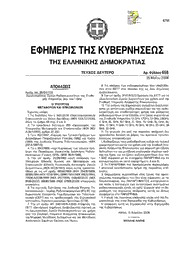
Greek Government Gazette: Part 2, 2006 no. 658
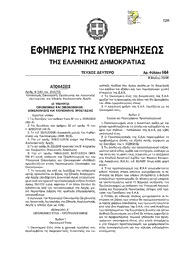
Greek Government Gazette: Part 2, 2006 no. 564
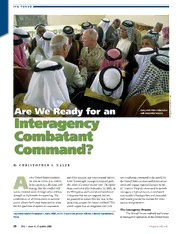
DTIC ADA521843: Are We Ready for an Interagency Combatant Command?
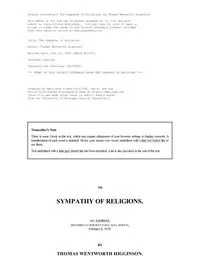
The Sympathy of Religions by Thomas Wentworth Higginson
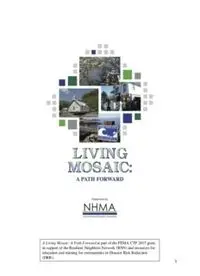
A Living Mosaic: A Path Forward - NHMA
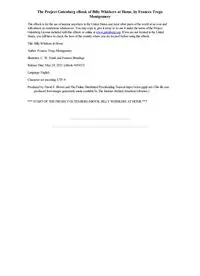
Billy Whiskers at Home by Frances Trego Montgomery
